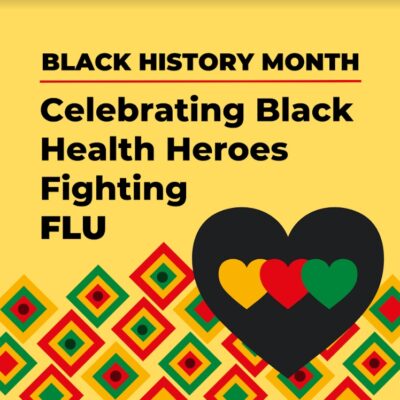- Expert Commentary
InFLUencer Dr. Kevin Ault on Prenatal Flu Vaccination

Dr. Kevin Ault is one of FFF’s medical advisors and a practicing OB/GYN. He is board certified in Obstetrics and Gynecology and practices at the University of Kansas Medical Center. He is also a voting member on the Advisory Committee on Immunization Practices. Dr. Ault is one of the few physicians in the United States that is both a fellow of the Infectious Diseases Society of America and a fellow of the American College of Obstetricians and Gynecologists.
Why should pregnant women get a flu vaccine?
I usually tell my patients that there are 3 reasons to get vaccinated during pregnancy:
- To prevent yourself from getting sick and take care of your own health.
- To have a healthy pregnancy – including preventing hospitalization and pre-term or stillbirth.
- To protect the newborn baby until they can get their own flu vaccination at 6 months old.
The history of pregnant women and flu vaccination
During the 1918 flu pandemic, many pregnant women died, and it became apparent that flu has a negative effect on pregnancy. A Journal of the American Medical Association article confirmed anecdotal reports that pregnant women experienced high rates of maternal mortality, stillbirths, and premature deliveries due to influenza.
In 1960, the US Surgeon General identified groups of people at-risk of influenza based on results from the 1957 H2N2 pandemic. These groups included people with chronic debilitating disease, people aged 65 years or older, and pregnant women. From then on, all of these high-risk groups were recommended to receive an annual flu vaccine. While vaccination recommendations have since been expanded to include other high-risk groups and now all people 6 months of age and older, this 1960 recommendation was the first to include pregnant women in the high-risk category.
In 1998, Dr. Kathy Neuzil published a paper about pregnant women in Tennessee during a seasonal flu season. She found that pregnant women were at increased risk of flu complications, especially in the later months of pregnancy. This article was especially important because her data showed that non-pandemic flu is deadly to pregnant women.
After the 2009 H1N1 flu pandemic, there became an interest in what other benefits besides reducing maternal mortality there are for vaccinating a pregnant mother. The pandemic was deadly not only to pregnant women, but also to their babies. Research after this pandemic found that stillbirth and pre-term delivery are both prevented through influenza vaccine.
What should pregnant moms know about getting the flu vaccine?

The data show that the most common time for babies to be hospitalized with flu is in the first few months of life, and unfortunately pediatric deaths can result. Many people don’t realize that children can and do still die and get hospitalized from influenza, so educating about that can be beneficial.
A comprehensive review on fetal and infant health shows that flu vaccinations during pregnancy prevent pre-term birth, reduce risk of low birth weight at birth, and other negative pregnancy and birth outcomes. A longitudinal study looked at pregnant mothers who were both vaccinated and not vaccinated during the 2009 pandemic and followed their children for 5 years. The authors found no differences between the children who were exposed and not exposed to the vaccine, indicating that flu vaccination does not have any long-term consequences to babies.
Flu vaccination is an important way for pregnant women to protect themselves, and their babies.
Sources:
https://www.ncbi.nlm.nih.gov/pmc/articles/PMC6693758/
https://www.ncbi.nlm.nih.gov/pmc/articles/PMC2600164
https://www.bmj.com/content/366/bmj.l4151
https://www.cdc.gov/flu/spotlights/2018-2019/babies-hospitalized-flu.htm
https://jamanetwork.com/journals/jama/article-abstract/220686
https://www.cdc.gov/flu/pandemic-resources/pandemic-timeline-1930-and-beyond.htm
https://www.sciencedaily.com/releases/2016/03/160331082507.htm


